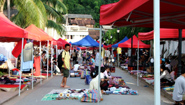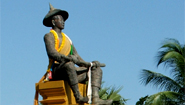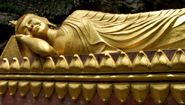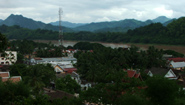People & Population

According to the 2006 estimate, Laos has a population of 6,368,481 people with an annual growth rate of 2.39%. Life expectancy of the total population is 55.5 years and infant mortality is high at 83 deaths per 1000 live births. On average, a woman has 4.68 children. Laos is a multi-ethnic society of which over 60% follows Buddhism. The literacy rate is high at 66.4%
Economy

After many years of warfare, peace finally came to Laos in 1975 along with the other Indochinese neighbors: Vietnam and Cambodia. The Lao government took total control of the country in 1975 when the economy was in a bankrupt state. Between 1975 – 1979, the Lao government implemented accelerated socialization policy which nationalized all important economic sectors and collectivized agriculture.
State & Law

Before 1975, different areas of Laos were ruled by different kings. In the 19th century the French came and Laos was integrated into French Indochina along with Vietnam and Cambodia. In October 1953, Laos was independent from France through the French – Laotian Treaty, the first Indochina War was finished, but the country didn't enjoy peace then. There were different political factions in Laos at the time, fighting for influence in different areas of the country.
History

Most parts of Laos, Cambodia and Thailand were inhabited as early as 10,000 years ago. Many of the ethnic groups in this area belonged to the Austro-Asiatic ethno-linguistic family. From around the 8th century and especially from the 10th century, there were significant numbers of Austro-Thai in southern China and northern Vietnam migrating southward and westward. They established their polities and called these Muangs which were ruled by a chieftain. The Austro-Thai tended to base their Muangs in river valleys.
Climate

Laos' climate is driven by monsoons which is similar to other South-East Asian countries. But different areas of the country have slightly different average temperatures and annual rainfalls.








